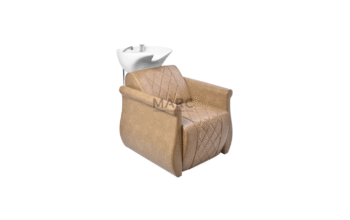In recent years, the financial landscape in India has undergone significant changes, and innovations in lending practices have made gold loans a popular option for borrowers seeking quick financing. However, amidst the growing demand for such loans, there’s a new twist catching the attention of regulators, lenders, and borrowers alike — the increasing role of the CIBIL score for gold loan applications. This development is making headlines for good reason, as it signals a shift toward credit-centric lending norms and enhanced risk management in an industry traditionally dominated by asset-backed security.
In this article, we delve into why the CIBIL score for gold loan applications is making waves and how it impacts borrowers, lenders, and the overall financial ecosystem.
Gold Loans: A Brief Overview
Gold loans have long been a convenient and trusted form of borrowing in India. With gold ingrained in the cultural fabric of the country, gold loan financing has historically served as a safety net for households or businesses needing immediate funding. Borrowers pledge their gold jewelry, coins, or other gold assets in exchange for a loan, usually amounting to a certain percentage of the gold’s market value — often referred to as the gold loan per gram rate.
Unlike unsecured financial products such as personal loans or credit cards, gold loans are secured against tangible assets, meaning lenders historically assessed loan eligibility based more on the value of pledged gold than on a borrower’s credit score or financial track record. Given the low risk involved for lenders — since the gold itself acts as collateral — gold loans have provided quick liquidity with minimal documentation requirements.
However, while the gold loan per gram rate remains a crucial factor in determining the loan amount, a growing trend is placing greater emphasis on borrowers’ credit profiles, particularly their CIBIL score.
What is a CIBIL Score?
A CIBIL score is a three-digit numerical representation of an individual’s creditworthiness, ranging from 300 to 900. It is derived based on their credit history, repayment behavior, outstanding debts, and other financial factors. The higher the score, the more creditworthy a borrower is deemed to be.
While CIBIL scores have traditionally been instrumental in determining loan eligibility for unsecured products like personal loans or credit cards, they are now gaining importance in secured lending markets like gold loans.
Why is CIBIL Score for Gold Loan Applications in the News?
Until recently, the CIBIL score played a negligible role in gold loan applications. This type of loan was considered low-risk for financial institutions since the pledged gold offered security in case of default. The gold’s value could easily be liquidated to recover the loan amount, putting minimal stress on lenders and making gold loans an easily accessible product for almost everyone.
However, the financial industry’s dynamics are shifting, and the CIBIL score is increasingly taking center stage in gold loan applications. Below are some key reasons behind this paradigm shift:
1. Enhanced Risk Management by Lenders
Lenders are adopting stricter loan profiling norms to reduce the risks associated with default and repayment delays. Although the collateralized nature of gold loans minimizes risk, financial institutions are now scrutinizing borrowers’ credit histories to ensure timely payments and uphold trust within their lending portfolios.
By evaluating the CIBIL score for gold loan applicants, lenders can understand the borrower’s financial habits better. Borrowers with poor repayment histories or frequent defaults may now face stricter loan conditions or may even be denied gold loans altogether. This practice aims to ensure that lending institutions deal only with creditworthy customers capable of meeting their obligations, minimizing operational risks.
2. Regulatory Push for Responsible Lending
The Reserve Bank of India (RBI) has been urging lenders to adopt more prudent lending practices. With rising loan defaults and credit risks across the financial sector, the RBI emphasizes responsible lending policies even for loans secured by assets like gold. In alignment with these guidelines, many lenders have introduced the use of CIBIL scores as an added metric for gold loan applications.
This change shows a broader evolution of India’s financial systems toward comprehensive credit risk analysis, even in sectors where traditional asset security has dominated.
3. Reduction in Loan Interest Rates
One of the perks of having a good CIBIL score is the potential to secure better interest rates. Borrowers with strong financial histories can now use their CIBIL score for gold loan applications to negotiate favorable terms with lenders. Improved credit scores signal reduced risk for lenders, enabling them to offer lower interest rates in exchange for lending to reliable borrowers.
This trend makes the interplay between CIBIL scores and gold loan applications particularly consequential for borrowers who want to minimize their borrowing costs while leveraging the value of their gold assets.
4. Expanding Gold Loan Market
The gold loan market in India is expanding rapidly, and competition among lenders is intensifying. In such an environment, lenders are increasingly looking to target highly creditworthy customers to reduce churn and improve customer retention. Integrating CIBIL scores into gold loan approvals helps financial institutions attract a segment of high-value customers likely to make timely repayments.
For borrowers, this translates to increased competition leading to potentially better deals, including higher loan-to-value (LTV) ratios, lower interest rates, and faster processing times.
5. Influence on Loan Approval Amounts
Although gold loans are primarily determined by the value of the pledged gold — typically calculated based on the gold loan per gram rate — a borrower’s CIBIL score is starting to play a secondary role in defining loan approval amounts. Individuals with excellent credit scores might be eligible for larger loans relative to the gold pledged or, in some cases, additional financial products complementary to their gold loans.
Implications for Borrowers
For borrowers, the increased focus on CIBIL scores brings both pros and cons:
– Advantages:
– Borrowers with high credit scores can leverage their ratings to secure better deals, negotiate lower interest rates, and potentially receive higher loan amounts.
– Increased transparency and fairness in gold loan decisions — customers with a solid repayment history are rewarded.
– Challenges:
– Borrowers with poor CIBIL scores may face difficulty in getting gold loans or may be subjected to stringent terms like higher interest rates, lower loan amounts, or shortened loan tenure.
– Documentation requirements may increase as lenders seek to verify both gold asset value and creditworthiness.
How Borrowers Can Respond to This Change
If you’re applying for a gold loan, here are steps to improve your chances of approval amidst the growing importance of your CIBIL score:
1. Check Your CIBIL Score Regularly: Use free tools or platforms to understand your credit profile and resolve inaccuracies, such as incorrect data or unexplained penalties.
2. Improve Repayment Habits: Make timely payments on existing loans and credit cards to gradually improve your credit score.
3. Reduce Outstanding Debts: Clearing dues can boost your score while signaling financial stability to lenders.
4. Negotiate Terms: Borrowers with good scores can negotiate lower interest rates or request better repayment terms from lenders.
Conclusion
The rise of CIBIL score evaluation in gold loan applications represents a transformative change in India’s lending environment. While gold loans have long been valued for their simplicity and accessibility, incorporating creditworthiness into eligibility criteria signals evolution toward more responsible lending practices. For borrowers, this shift presents both opportunities and challenges; those with high CIBIL scores stand to gain better deals, while those with poor ratings must reassess their financial habits.
As this trend unfolds, borrowers cementing strong credit histories will likely emerge as winners in the gold loan market. Simultaneously, lenders will benefit from more risk-proof lending practices, bolstered by better targeting of trustworthy borrowers. For stakeholders across the spectrum, the interplay between the CIBIL score for gold loan applications and the gold loan per gram rate will shape the future of secured lending. And as it continues to make headlines, one thing is certain — the value of creditworthiness has never been more significant, even in asset-backed financing.




